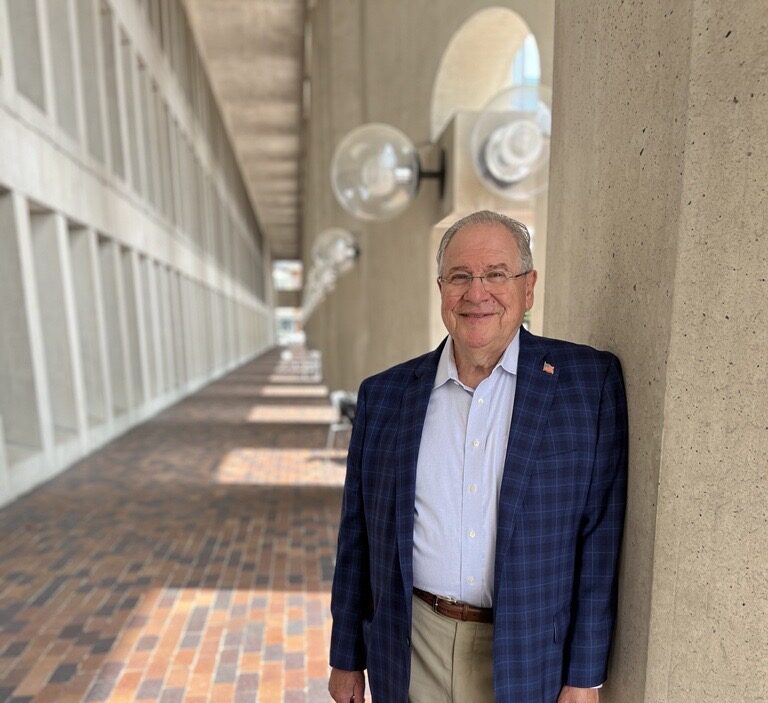Faculty Insights: Noor Ali, Concentration Lead for Transformative School Leadership, Ed.D. Program

CPS is proud to be home to esteemed faculty whose academic and professional careers advance diverse areas of expertise. Faculty Insights is an opportunity to shine a spotlight on their thoughts about important issues and ideas.
Part One of a Four-Part Series on equity in higher education by Noor Ali
DEI: Back to Basics
Some say DEI is going through a rebrand. Companies that espoused DEI practices in annual reports last year are starting to reframe their language.
According to a recent story in the Washington Post:
“Last year, Eli Lilly’s annual shareholders letter referenced the acronym for diversity, equity and inclusion 48 times. This year, “DEI” is nowhere to be found. In March, Starbucks got shareholder approval to replace “representation” goals with “talent” performance for executive bonus incentives. At Molson Coors, “People & Planet” metrics have displaced environmental, social and governance (ESG) goals, and the acronym DEI has disappeared altogether.”
The politicization of equity is everywhere and while most businesses and individuals still say the values of DEI are important, there’s something polarizing about the acronym that has people shying away from direct conversations about its intent.
“As an advocate of diversity, equity and inclusion for most of my personal and professional life, including my doctoral studies in critical race theory and my position as an assistant teaching professor at Northeastern University’s College of Professional Studies, I see from the front lines of DEI just how slippery the slope we are on has become when it comes to social justice and equity work. ”
–Noor Ali, Assistant Teaching Professor of Education, Concentration Lead, College of Professional Studies, Northeastern University
To bring some solid ground to the discussion, I’m sharing some thoughts on equity starting at the very beginning.
What is DEI?
Across the country, state lawmakers are proposing and enacting bills to limit diversity, equity, and inclusion programs at state-funded institutions. The concept of equity has been redefined by opponents and weaponized.
Before arguing for higher education to defend DEI in the face of these attacks, it is essential to first define DEI.
First, what DEI is NOT.
DEI is NOT about taking rights or opportunities away from anyone. It is not about making it harder for anyone to achieve their goals, nor is it about creating performative box checking so that employers can include photos of their “diverse” workforce in annual reports.
The essential element of DEI is the “E” – equity. Not to be confused with equality which means giving everyone the same resources, the same opportunities, the same access. In theory, this seems fair. It even seems “American”. However, the challenge with equality on its own is that it fails to acknowledge the uneven playing field born out of centuries of building opportunity for some on the backs of free labor from others. From the horrors of enslavement to the unpaid invisible work of today, the pursuit of equality neglects centuries of laws that have intentionally limited access to opportunities for some while largely benefiting a minority of others. The result is that the same hard work one person puts in cannot possibly be measured against the hard work of someone else who has the generational wind of opportunity at their back.
By way of analogy, as the world gears up for the summer Olympics in Paris, imagine if in the 100 meter dash everyone was starting at the same starting line, but some people were barefoot, some were made to pull an invisible weight, and others were forced to start late. Technically, they all would be equally judged against their ability to run the 100 meters. But would it be equitable?
To suggest that we all just need to ‘pull ourselves up by our bootstraps and work hard, and that alone is enough’, reeks of privilege.
Anti-DEI efforts are grounded in an intentional misunderstanding and mischaracterization of DEI. Opponents of DEI have developed a “DEI straw man”, turning a vision for hope and equity into a weapon of outrage and fear.
Fear is powerful. Hope is hard.
When I did my dissertation in 2018, I used Critical Race Theory (CRT) as the theoretical framework for my study– another term that has since been weaponized. In the immediate aftermath of George Floyd’s murder and the subsequent protests around the nation, there was a mad rush toward performative actions that seemed to indicate the tide may be turning toward a more open discussion around equity and anti-racism.
The NFL finally got rid of the “redskins” as the team mascot for our nation’s capital. Columbus Day became Indigenous Peoples Day. Companies and higher education institutions hired DEI Directors and charged these new largely Black, Indigenous, and People of Color (BIPOC) leaders with change.
The result, while we see that names have changed, most of the BIPOC DEI Directors seldom lasted more than one or two years because any change they sought to bring in to dismantle systemic racism were blocked.
Why? Our awareness of issues around social justice is very selective. We champion causes, sometimes. And other times, we completely ignore issues. And the selection of it is mind boggling. It has a lot to do with what maintains comfort and privilege, around what is popular versus what is not popular. The moment change becomes uncomfortable, we shy away from it. And suddenly words that were rally cries for justice in corporate annual reports, disappear.
Here is where education plays a vital role.
Any society’s access to learning and thinking happens largely within educational spaces – mostly public educational spaces, including K-12 schools and colleges. One might even argue that for good or bad, social media has become a kind of public education space. If we deny or limit what constitutes critical thinking and start to censor content, we are jeopardizing the bedrock of democracy.
From conversations about banning Tik Tok, to cancelling the 1619 project, to eliminating gender studies, to book banning, to censoring math problems with proper names that some feel sound “too woke” – each one of these decisions puts another nail in the coffin of free speech and critical thinking. And each one of these decisions is fundamentally rooted in fear.
Fear is easy.
But to have an entire society’s default be set on fear sets us up to become the type of society that refuses to question authority. This is how dictatorships are born. If you want the masses of people in a democracy to be silenced, deny them access to a history that offers a diverse perspective. Because what we know of our history informs our future.
In so far as education is the currency of opportunity, we must embrace the tenants of DEI in education more palpably than anywhere else. Higher ed is all about growth and as such it needs to be where we are given space to be uncomfortable. Growth cannot happen comfortably and an inclusive and equitable framing is what will carry us forward through the discomfort of real substantial change.
Neutrality is a myth. Equity is essential. We cannot allow the hope of DEI to be turned into fear. We must stand up for change, especially when it is uncomfortable.
If you agree (perhaps more so if you don’t), please join me over the next few months to explore the evolving role of education and DEI as a critical framework for advancing freedom.
Up next: Part Two — The role of an equity framework in the classroom (Preschool and beyond)




